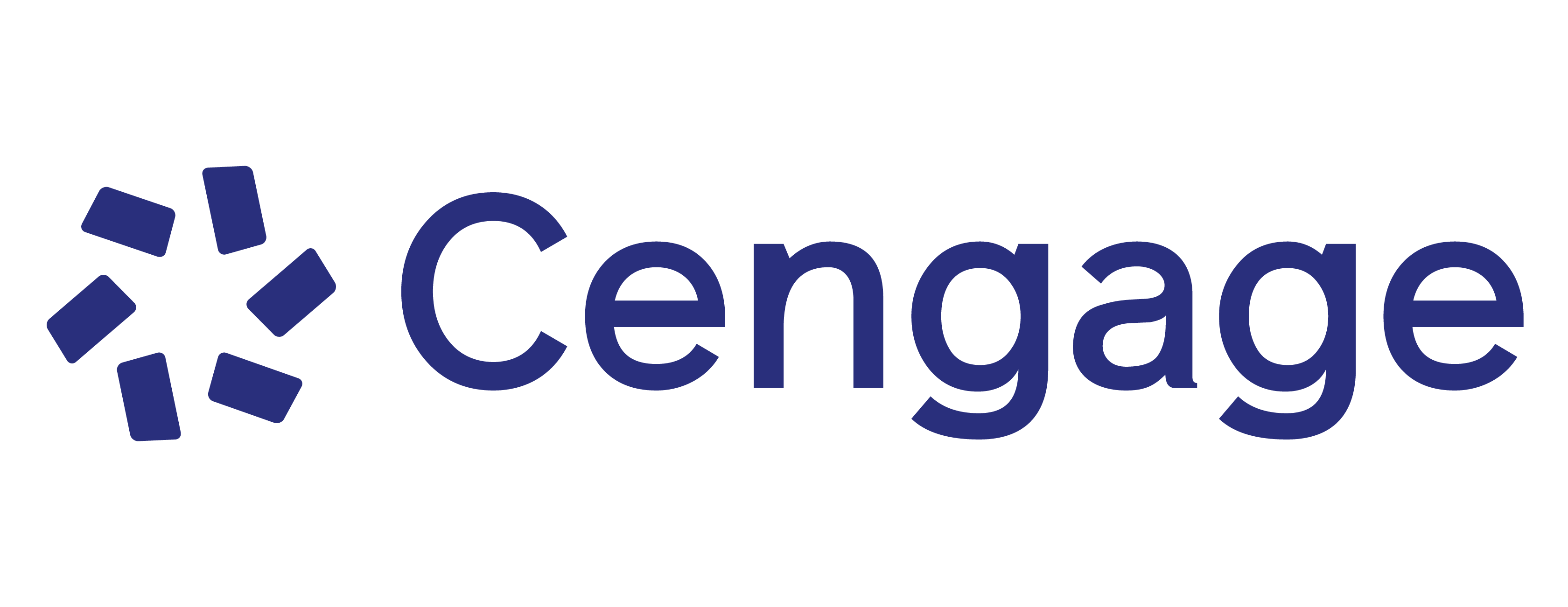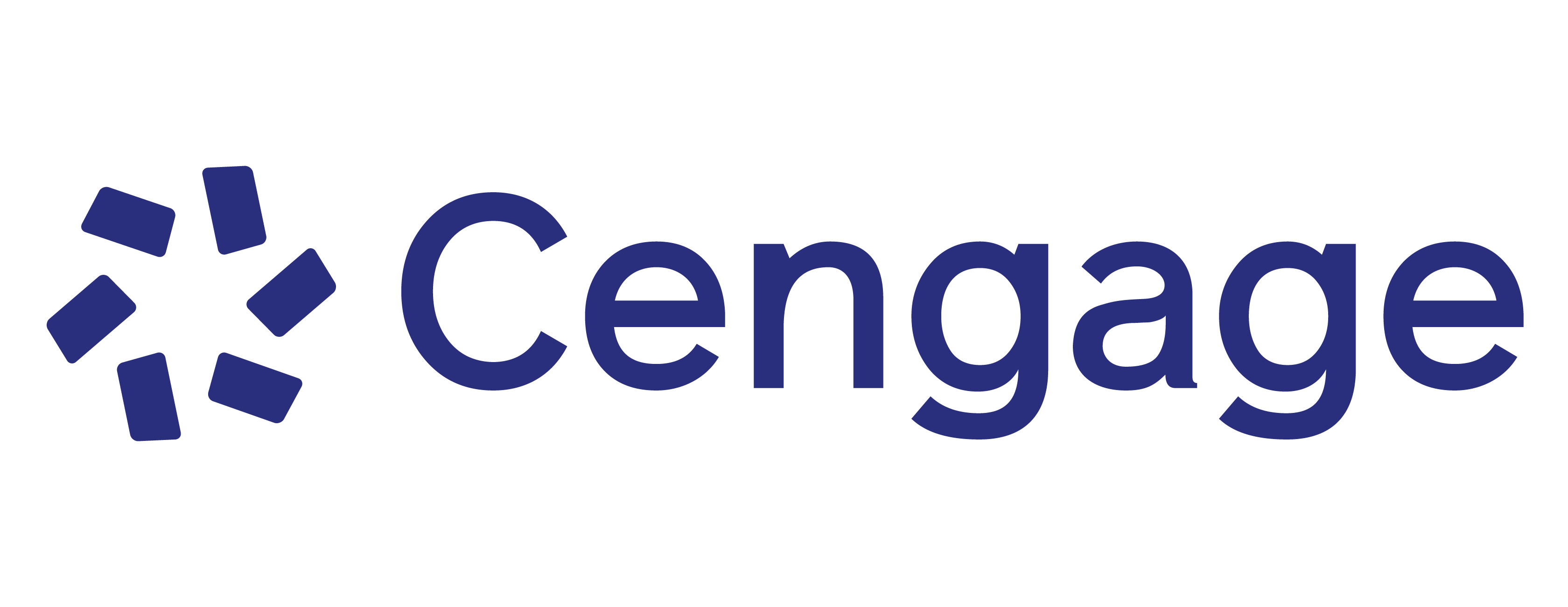Jouaneh's FUNDAMENTALS OF MECHATRONICS, 2nd Edition, focuses on fundamental concepts, operating principles, application considerations and relevant practical issues that arise in the selection and design of mechatronics components and systems. Both hardware and software aspects of mechatronics systems are covered, giving a complete treatment to the subject matter. The text includes a large number of worked examples and end-of-chapter questions and problems. Video links are included with almost every topic covered in the text to provide more information and view applications of these topics. The text covers the Arduino platform and has code examples in both C and MATLAB. A separate laboratory book with additional exercises is provided to give guided hands-on experience with many of the topics covered in the text.
Preface.
1. Introduction to Mechatronics.
1.1 Introduction.
1.2 Examples of Mechatronic Systems.
1.3 Overview of Text.
1.4 Integrated Mechatronics Case Studies.
Questions and Problems.
2. Analog Circuits and Components.
2.1 Introduction.
2.2 Analog Circuit Elements.
2.3 Switches.
2.3.1 Mechanical Switches.
2.3.2 Electromechanical Relays.
2.4 Circuit Analysis.
2.5 Equivalent Circuits.
2.6 Impedance.
2.7 AC Signals.
2.8 Power in Circuits.
2.9 Operational Amplifiers.
2.9.1 Comparator Op-Amp.
2.9.2 Inverting Op-Amp.
2.9.3 Non-Inverting Op-Amp.
2.9.4 Differential Op-Amp.
2.9.5 Instrumentation Amplifier Op-Amp.
2.9.6 Integrating Op-Amp.
2.9.7 Power Amplifier.
2.10 Grounding.
2.11 Power Supplies and Batteries.
2.12 Chapter Summary.
Questions, Problems, and Laboratory/Programming Exercises.
3. Semiconductor Electronic Devices and Digital Circuits.
3.1 Introduction.
3.2 Diodes.
3.2.1 Zener Diode.
3.2.2 LED.
3.2.3 Photo-Diode.
3.3 Thyristors.
3.4 Bipolar Junction Transistor.
3.4.1 Transistor Switch Circuit.
3.4.2 Emitter Follower Circuit.
3.4.3 Open Collector Output.
3.4.4 Phototransistor, Photo-Interrupter, and Opto-Isolator.
3.5 Metal-Oxide Semiconductor Field Effect Transistor.
3.6 Combinational Logic Circuits.
3.6.1 Boolean Algebra.
3.6.2 Boolean Function Generation from Truth Tables.
3.6.3 Multiplexers and Decoders.
3.7 Sequential Logic Circuits.
3.8 Circuit Families.
3.9 Digital Devices.
3.10 H-Bridge Drives.
3.11 Chapter Summary.
Questions, Problems, and Laboratory/Programming Exercises.
4. Microcontrollers.
4.1 Introduction.
4.2 Numbering Systems.
4.2.1 Decimal System.
4.2.2 Binary System.
4.2.3 Hexadecimal System.
4.2.4 Negative Numbers Representation.
4.2.5 Representation of Real Numbers.
4.3 Microprocessors and Microcontrollers.
4.3.1 Processor, Memory, and Buses.
4.3.2 Components of a Typical Microcontroller.
4.3.3 Design Architectures and MCU Operation.
4.4 AVR Microcontrollers.
4.4.1 Pin layout.
4.4.2 AVR MCU Block Diagram.
4.4.3 Arduino UNO Board.
4.4.4 Clock/Oscillator Source.
4.4.5 Programming a Microcontroller.
4.5 Digital Input/Output and Analog to Digital Conversion Operations.
4.6 PWM Operation.
4.6.1 PWM Generation and Modes.
4.6.2 PWM Details in ATMega328P MCU.
4.7 AVR MCU Components and Features.
4.7.1 EEPROM DATA.
4.7.2 Timing Delays and Timers.
4.7.3 Watchdog Timer.
4.7.4 Reset Operations.
4.8 Chapter Summary.
Questions, Problems, and Laboratory/Programming Exercises.
5. Data Acquisition and Microcontroller/PC Interfacing.
5.1 Introduction.
5.2 Sampling.
5.2.1 Sampling Theory.
5.2.2 Signal Reconstruction.
5.3 Analog-to-Digital Converter.
5.3.1 A/D Characteristics.
5.3.2 A/D Operation.
5.3.3 A/D Input Signal Configuration.
5.4 Digital-to-Analog Converter.
5.4.1 D/A Characteristics.
5.4.2 D/A Operation.
5.5 Data Acquisition.
5.5.1 Data Acquisition Boards.
5.5.2 MATLAB/Simulink Data Acquisition.
5.6 Serial Communication.
5.7 Serial Peripheral Interface.
5.8 Inter-Integrated Circuit Interface.
5.9 Chapter Summary.
Questions, Problems, and Laboratory/Programming Exercises.
6. Control Software.
6.1 Introduction.
6.2 Time and Timers.
6.3 Timing Functions.
6.3.1 Timer Implementation in MATLAB.
6.3.2 Timing in AVR Microcontrollers.
6.4 Events and Event-Driven Programming.
6.5 Task/State Control Software Structure.
6.5.1 Discrete Event Control Tasks.
6.5.2 Feedback Control Tasks.
6.5.3 State Transition Diagrams for Integrated Case Studies.
6.6 Task and State Structure in Code.
6.6.1 Details of States in a Task.
6.6.2 Cooperative Control Mode.
6.6.3 Cooperative Control Mode Implementation.
6.7 Examples of Control Tasks Implementation in Software.
6.7.1 Implementation in MATLAB.
6.7.2 Implementation in an AVR Microcontroller.
6.8 Chapter Summary.
Questions, Problems, and Laboratory/Programming Exercises.
7. System Response.
7.1 Introduction.
7.2 Time Response of First-Order Systems.
7.3 Time Response of Second-Order Systems.
7.4 Transfer Functions.
7.5 Frequency Response.
7.5.1 Frequency Response Plots.
7.5.2 Resonance.
7.5.3 Bandwidth.
7.6 Filtering.
7.7 MATLAB Simulation of Dynamic Systems.
7.7.1 State Space Solution Method.
7.7.2 Direct Integration using ODE Solvers.
7.7.3 Transfer Function Methods.
7.7.4 Block Diagram Representation and Simulation in SIMULINK.
7.8 Chapter Summary.
Questions, Problems, and Laboratory/Programming Exercises.
8. Sensors.
8.1 Introduction.
8.2 Sensors Performance Terminology.
8.2.1 Static Characteristics.
8.2.2 Dynamic Characteristics.
8.3 Displacement Measurement.
8.3.1 Potentiometers.
8.3.2 LVDT.
8.3.3 Optical Incremental Encoder.
8.3.4 Optical Absolute Encoder.
8.3.5 Resolver.
8.4 Proximity Measurement.
8.4.1 Hall Effect Sensors.
8.4.2 Inductive Proximity Sensors.
8.4.3 Capacitive Proximity Sensors.
8.4.4 Ultrasonic Sensors.
8.4.5 Contact Type Proximity Sensors.
8.5 Speed Measurement.
8.5.1 Tachometer.
8.5.2 Encoder.
8.6 Strain Measurement.
8.7 Force and Torque Measurement.
8.7.1 Force Sensors.
8.7.2 Force-Sensing Resistor.
8.7.3 Torque Sensors.
8.7.4 Multi-Axis Force/Torque Sensors.
8.8 Temperature Measurement.
8.8.1 Thermistors.
8.8.2 Thermocouples.
8.8.3 RTD.
8.9 Vibration Measurement.
8.9.1 Seismic Mass Operating Principle.
8.9.2 Piezoelectric Accelerometers.
8.10 Integrated Circuits (IC) Sensors.
8.10.1 IC Temperature Sensors.
8.10.2 IC Accelerometers.
8.10.3 IC IMU Sensors.
8.11 Signal Conditioning.
8.11.1 Filtering.
8.11.2 Amplification.
8.11.3 Bridge Circuits.
8.12 Understanding 4-20 mA Sensor Output Signals.
8.13 Chapter Summary
Questions, Problems, and Laboratory/Programming Exercises.
9. Actuators.
9.1 Introduction.
9.2 DC-Motors.
9.2.1 Brush DC.
9.2.2 Brushless DC.
9.2.3 Servo Drives.
9.2.4 PWM Control of DC Motors.
9.3 Solenoids.
9.4 AC Motors.
9.5 Stepper Motors.
9.5.1 Drive Methods.
9.5.2 Wiring and Amplifiers.
9.6 Other Motor Types.
9.7 Electric Motor Selection.
9.8 Pneumatic and Hydraulic Actuators.
9.9 Other Actuator Types.
9.9.1 Piezoelectric Actuators.
9.9.2 Shape Memory Alloy Actuators.
9.10 Chapter Summary.
Questions, Problems, and Laboratory/Programming Exercises.
10. Feedback Control.
10.1 Introduction.
10.2 Open and Closed-Loop Control.
10.3 Design of Feedback Control Systems.
10.4 Control Basics.
10.5 On-Off Controller.
10.6 PID Controller Introduction.
10.7 PID-Control of a First-Order System.
10.7.1 P-Control of a First-Order System.
10.7.2 PI-Control of a First-Order System.
10.7.3 PD-Control of a First-Order System.
10.7.4 PID-Control of a First-Order System.
10.8 PID-Control of a Second-Order System.
10.8.1 P-Control of a Second-Order System.
10.8.2 PI-Control of a Second-Order System.
10.8.3 PD-Control of a Second-Order System.
10.8.4 PID-Control of a Second-Order System.
10.8.5 Cascaded Control Loop Structure.
10.9 Controller Design Considerations.
10.9.1 Controller Stability.
10.9.2 Controller Bandwidth.
10.9.3 Controller Tuning.
10.9.4 Control Robustness.
10.9.5 Controller Digital Implementation.
10.10 Nonlinearities.
10.10.1 Saturation.
10.10.2 Nonlinear Friction.
10.11 State Feedback Controller.
10.12 Chapter Summary.
Questions, Problems, and Laboratory/Programming Exercises.
11. Mechatronics Case Studies.
11.1 Introduction.
11.2 Case Study I: Stepper-Motor Driven Rotary Table.
11.2.1 Case Study Objectives.
11.2.2 Setup Description.
11.2.3 Sensor and Motor Wiring.
11.2.4 Operation Commands and Control Software.
11.2.5 Summary and Modifications.
11.2.6 List of Parts Needed.
11.3 Case Study II: DC-Motor Driven Linear Motion Slide.
11.3.1 Case Study Objectives.
11.3.2 Setup Description.
11.3.3 Modeling of the System.
11.3.4 Feedback Controller Simulation in MATLAB.
11.3.5 Experimental Results.
11.3.6 Summary and Modifications.
11.3.7 List of Parts Needed.
11.4 Case Study III: Temperature-Controlled Heating System.
11.4.1 Case Study Objectives.
11.4.2 Setup Description.
11.4.3 PC User Interface.
11.4.4 Microcontroller Code.
11.4.5 System Modeling.
11.4.6 Controller Simulation in MATLAB.
11.4.7 Experimental Results.
11.4.8 Summary and Modifications.
11.4.9 List of Parts Needed.
11.5 Case Study IV: Mobile Robot.
11.5.1 Case Study Objectives.
11.5.2 Setup Description.
11.5.3 Motors and Encoders.
11.5.4 Inertial Sensor.
11.5.5 Closed Loop Control of the Robot Position.
11.5.6 Summary and Modifications.
11.5.7 List of Parts Needed.
11.6 Chapter Summary.
Bibliography.
Appendix A: Standard Resistor Values.
Appendix B: 7-bit ASCII Code.
Appendix C: Laplace Transform.
Appendix D: Dynamic Modeling of Mechanical Systems.
D.1 Introduction.
D.2 Modeling of Mechanical Systems without Spring Elements.
D.2 Modeling of Mechanical Systems with Spring Elements.
D.4 Work-Energy Principle.
INDEX.
-
Musa Jouaneh
Musa Jouaneh received his B.S. in Mechanical Engineering from the University of Louisiana, Lafayette in 1984 and then went on to the University of California at Berkeley where he received his M.Eng in 1986 and his Ph.D. in 1989. He is currently a Professor of Mechanical Engineering and Applied Mechanics at the University of Rhode Island. His teaching interests include Mechatronics, Robotics, Real-Time Monitoring and Control, and Engineering Mechanics. Professor Jouaneh has been the recipient of several awards including URI Outstanding Contributions to Intellectual Property Award (2004),The URI Foundation Teaching Excellence Award (2003), URI Outstanding Intellectual Property Development Recognition Award (2003), The 2002-2003 Edmund and Dorothy Marshall Faculty Excellence Award in Engineering, Advisor to Merit Award Winner in the Lincoln Arc Welding Foundation Design Competition (2001 and 2002), Albert E. Carlotti Faculty Excellence Award in Engineering (1993), Graduate Fellowship, University of California at Berkeley (1984-1985).
-
This text has been extensively revised and updated to offer students broader and deeper coverage of topics, enhanced relevance to current technology and a substantial increase in the number of worked examples, including end-of-chapter problems and questions.
-
Comprehensive Coverage of Essential Topics: The textbook offers an in-depth exploration of key mechatronics concepts, including both analog and digital circuits, basic electronics, microcontrollers, data acquisition and interfacing, control software, system response, sensors, actuators and feedback control. This comprehensive coverage ensures that instructors have a single, cohesive resource for teaching a wide range of topics. This saves time and effort in curriculum planning, as the textbook provides all necessary materials in one place, ensuring a streamlined teaching experience.
-
Emphasis on Fundamental Concepts and Operational Principles: The book focuses on the core principles and functioning of various components and devices integral to mechatronics systems. This approach aids in building a strong foundational understanding among students. This facilitates effective teaching by providing clear explanations and insights into the workings of mechatronic systems, enabling instructors to convey complex concepts more easily.
-
Real-World Applications and Manufacturer Data Sheets: The textbook includes numerous real-world examples, leveraging current manufacturers' data sheets to illustrate practical applications of theoretical concepts. This enhances teaching with relevant and up-to-date industry examples, making lessons more engaging and relatable for students. This connection between theory and practice helps in better student comprehension and interest.
-
Integrated Case Studies for Holistic Learning: Four detailed case studies are interwoven throughout the book, encompassing design, modeling, simulation, control and implementation aspects of mechatronic systems. This offers a unique teaching tool that demonstrates the interconnectedness of mechatronics concepts in real-world scenarios, aiding in the delivery of more interactive and impactful lessons.
-
Coverage of Arduino Microcontrollers: The text includes an in-depth exploration of Arduino microcontrollers, focusing on their role in mechatronics. Detailed guidance on interfacing microcontrollers and PCs with mechatronic components using both asynchronous and synchronous serial communication techniques is included. The coverage emphasizes the practical applications of these technologies in modern mechatronic design.
-
Structured Control Software Development: Comprehensive coverage of structured control software development, including timing, event-driven programming and state transition diagrams. The discussion extends to their implementation in both microcontroller and PC-based systems. The text incorporates software coding examples in both C and MATLAB, offering a complete approach to learning and understanding of these critical software concepts.
-
Integration of Video Resources: Each topic in the textbook is supplemented with video links, offering students additional resources for understanding and visualizing the concepts discussed. These multimedia resources cater to diverse learning styles, providing an enriched learning experience that goes beyond traditional textbook formats.
-
Comprehensive Problem-Solving and Programming Resources: The text is abundant with example problems, concept questions, end-of-chapter problems and basic programming/laboratory exercises that are available in most chapters. These resources are designed to reinforce learning, encourage critical thinking and develop practical skills that are essential for success in the field of mechatronics.
-
Companion Laboratory Book: A companion book containing mechatronics lab exercises designed to give students guided, hands-on experience with the application of the concepts covered in the text is available.
-
Additional Instructor Resources: Instructor's Solution Manual, Annotated PowerPoints and Lecture Builder PowerPoints can be found on the accompanying Instructor Companion website.
Instructor Companion Website for Fundamentals of Mechatronics
9780357684924
Instructor Solutions Manual Lab Exercises for Jouaneh's Fundamentals of Mechatronics
9780357684900


